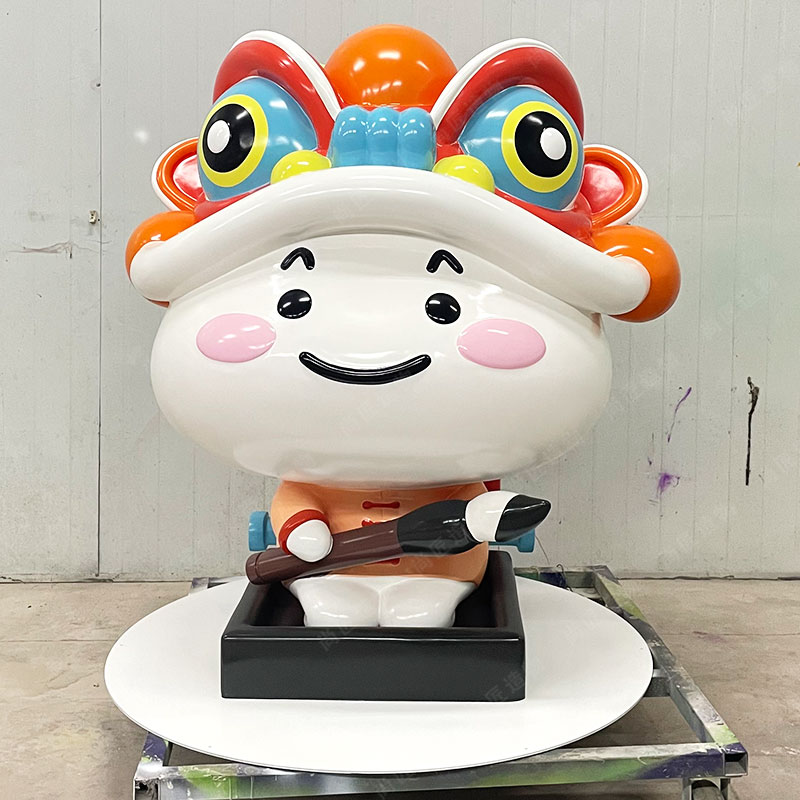Key Takeaways
Fiber-reinforced plastic (FRP) sculptures combine artistic detail with engineering durability, offering versatile solutions for modern interior and exterior design. Unlike traditional bronze, FRP’s lightweight composition simplifies installation while maintaining a premium metallic finish.
“FRP’s adaptability bridges the gap between artistry and practicality, allowing intricate designs to thrive in demanding environments.” – Architectural Materials Review, 2023
These sculptures resist corrosion, UV damage, and temperature fluctuations, making them ideal for outdoor installations like garden statues or building façades. Indoor applications range from wall murals that mimic carved stone to furniture accents with seamless, high-gloss finishes.
Tip: For high-traffic areas, opt for FRP sculptures with textured coatings to minimize surface wear.
Cost efficiency is another advantage—FRP replicates the aesthetic of bronze or marble at a fraction of the price. Customization options, such as scaled-down replicas or site-specific designs, enable cohesive integration into existing décor themes. Transitioning between indoor and outdoor spaces becomes effortless due to the material’s uniformity in appearance and structural resilience.
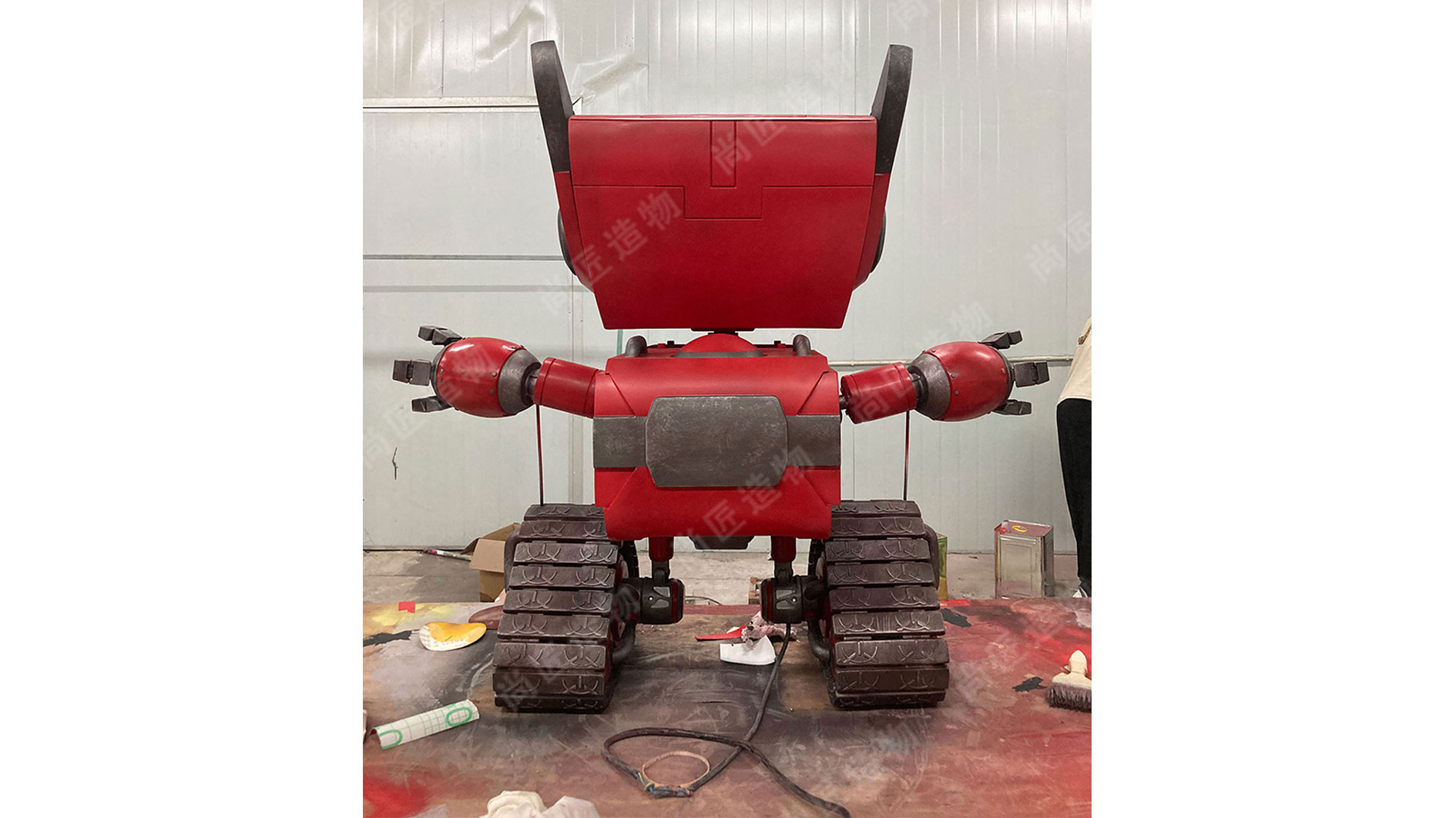
Lightweight FRP Sculptures Modern Design
In contemporary art and design, FRP (Fiber Reinforced Plastic) sculptures have emerged as a groundbreaking solution for blending aesthetic appeal with functional practicality. Unlike traditional bronze or stone, FRP’s composite structure—combining fiberglass strands with polymer resin—creates pieces that are remarkably lightweight yet structurally robust. This weight advantage enables artists and designers to craft large-scale installations without compromising on portability or ease of installation, making them ideal for dynamic modern spaces ranging from corporate lobbies to residential gardens.
The material’s versatility supports intricate detailing and sleek, geometric forms that align with minimalist and avant-garde design trends. For instance, Realistic sculpture creations in FRP can mimic the texture of bronze while incorporating abstract shapes that reflect contemporary sensibilities. Designers also leverage FRP’s moldability to produce modular sculptures or functional art pieces like floating wall panels and ergonomic furniture. Beyond aesthetics, the reduced weight minimizes logistical challenges during transportation and mounting, allowing for creative placements in elevated or unconventional areas. By merging innovation with durability, FRP sculptures redefine how modern environments integrate art without sacrificing adaptability or visual impact.
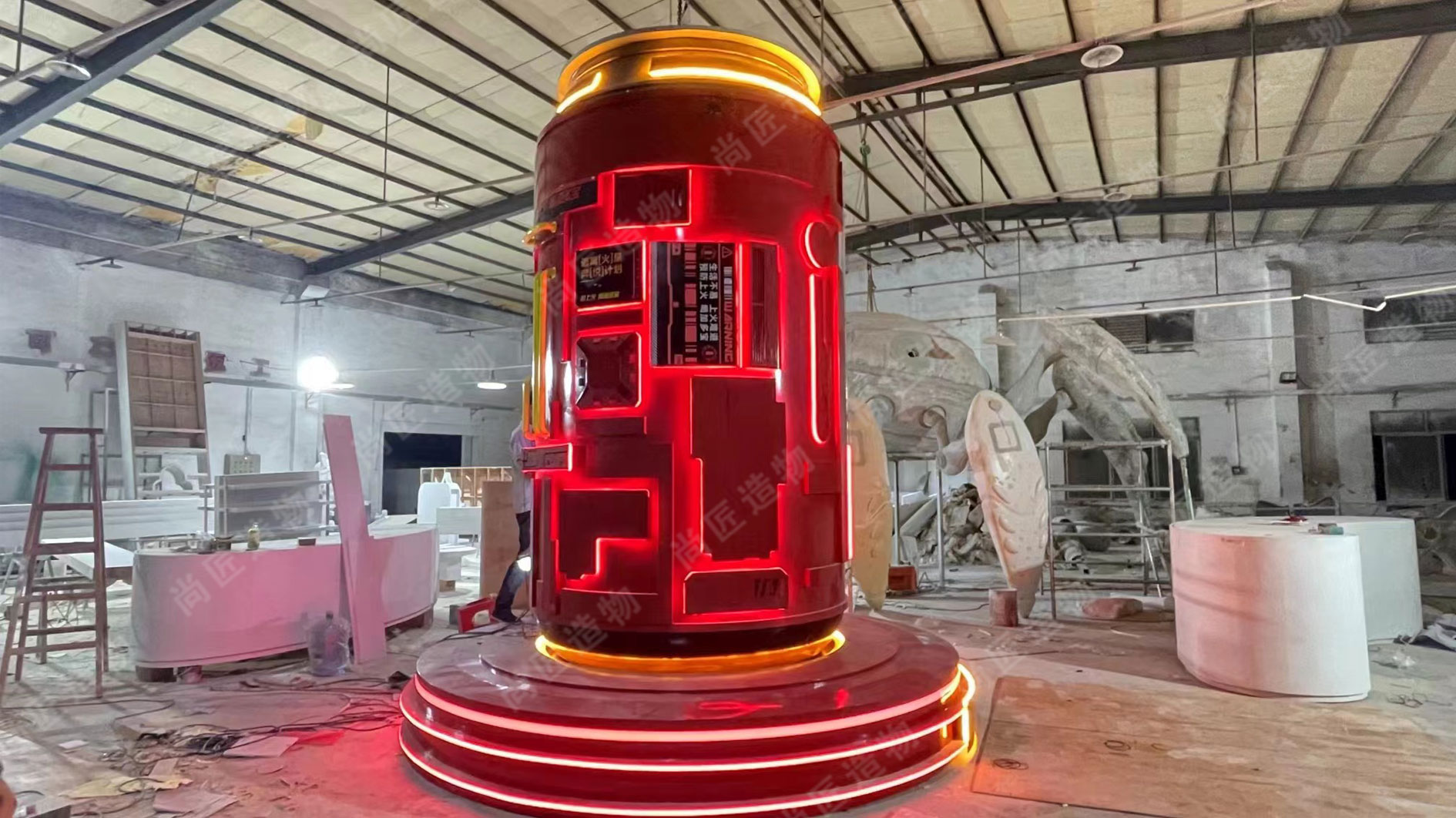
Durable Bronze-Like Art With FRP Technology
Fiberglass-reinforced plastic (FRP) combines advanced material science with artistic craftsmanship to replicate the timeless appeal of bronze sculptures while addressing modern practical needs. Unlike traditional bronze, which weighs up to 8-10 times more, FRP sculptures achieve lifelike textures and metallic finishes through specialized layering techniques. A resin base infused with fiberglass strands creates a rigid structure, while surface coatings—such as polyurethane or cold-cast bronze powder—mimic oxidation effects and patina variations.
| Feature | Traditional Bronze | FRP Alternative |
|---|---|---|
| Weight | Heavy (300-500 lbs) | Lightweight (30-60 lbs) |
| Weather Resistance | Prone to oxidation | UV-stable, waterproof |
| Cost | $15,000+ | $2,000-$5,000 |
| Installation | Requires heavy equipment | Hand-carried, wall-mounted |
This innovation allows artists to create intricate details—such as flowing drapery or textured armor—without compromising structural integrity. For example, Fiberglass sculpture installations in coastal areas retain their finish despite saltwater exposure, demonstrating FRP’s adaptability. By blending artisanal methods with industrial-grade materials, FRP bridges the gap between classical aesthetics and contemporary durability, making museum-quality art accessible for homes, gardens, and commercial spaces.
Weather-Resistant FRP Statues Outdoor Use
Fiber-reinforced polymer (https://en.artmovr.com/) crafted from FRP maintain their structural integrity and vibrant finishes even in coastal areas with high salt content or regions experiencing heavy rainfall.
The material’s lightweight nature simplifies installation in gardens, patios, or public spaces, eliminating the need for heavy foundations required by bronze or concrete alternatives. Additionally, FRP statues require minimal maintenance—occasional cleaning with mild soap and water preserves their appearance for decades. Customizable finishes, including bronze-like textures, allow these pieces to mimic high-end metals while avoiding issues like patina or tarnish. Whether used as standalone focal points or integrated into functional elements like fountains, FRP sculptures offer a practical yet artistic solution for enhancing outdoor aesthetics across residential and commercial settings.
Transform Spaces Realistic FRP Wall Murals
Realistic FRP wall murals redefine interior and exterior design by merging artistic precision with functional durability. Crafted from fiber-reinforced plastic, these murals capture intricate details—from lifelike textures to dynamic shadows—mimicking traditional bronze or stone artworks without their weight or maintenance demands. Their lightweight composition allows seamless installation on diverse surfaces, including curved walls or high-traffic areas, while remaining resistant to cracking, fading, or weather damage.
Beyond aesthetics, FRP murals offer practical versatility. They enhance commercial lobbies, outdoor gardens, and residential accent walls with equal impact, adapting to both modern and classical themes. For projects requiring narrative depth, IP character sculptures can be integrated into mural designs, creating cohesive storytelling elements. Moreover, the material’s moldability supports custom scales and shapes, enabling designers to fill unconventional spaces with precision.
This adaptability makes FRP murals a cost-effective alternative to metal or stone, particularly for large-scale installations. Their UV-resistant finishes retain vibrancy for decades, even in sun-exposed or humid environments. By combining artistry with engineering, these murals transform blank walls into immersive focal points, proving that durable materials can coexist with delicate visual expression.
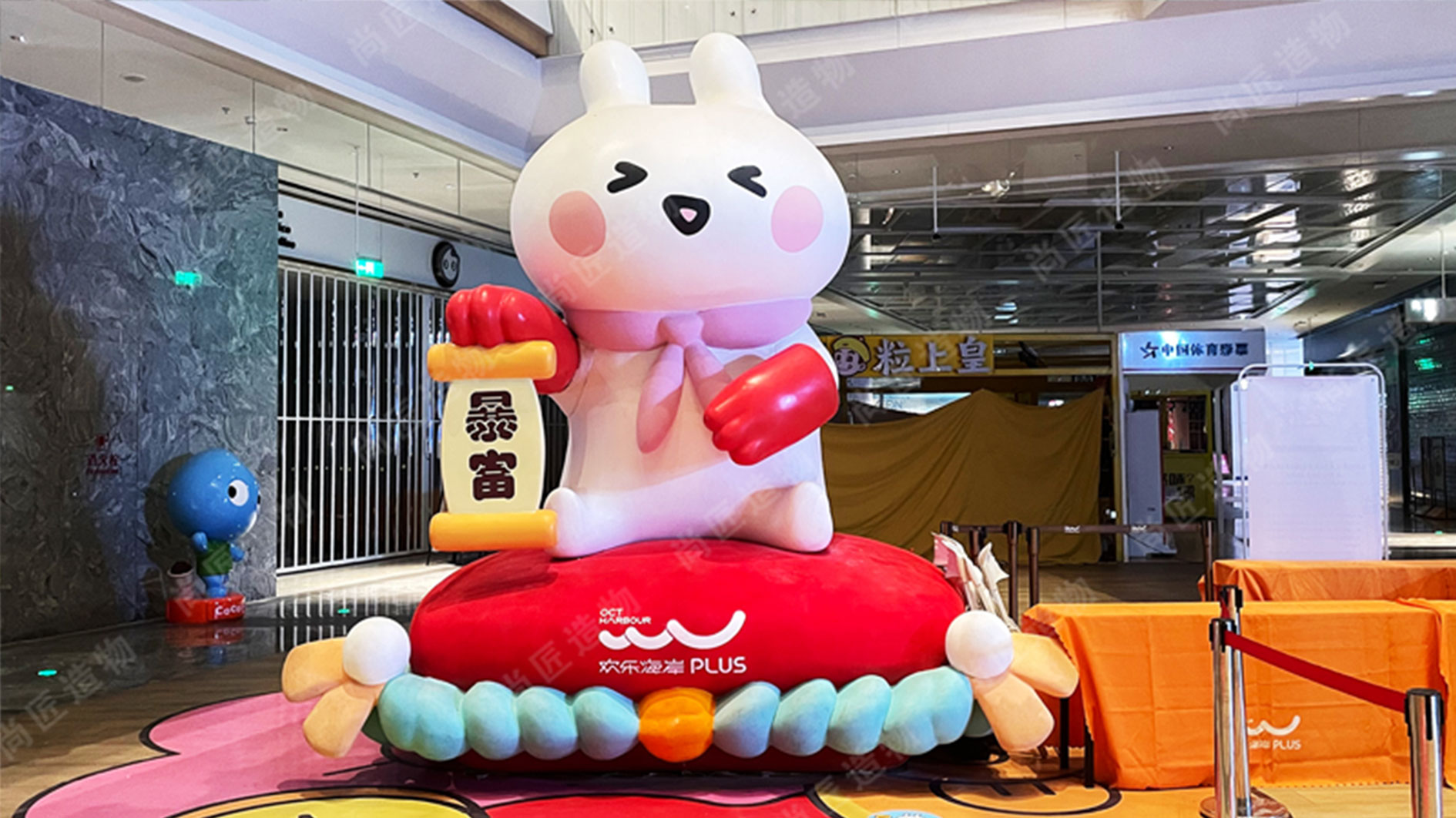
FRP Furniture Elegant Long-Lasting Solutions
Fiber-reinforced plastic (FRP) furniture redefines modern design by merging aesthetic sophistication with exceptional durability. Unlike traditional materials such as wood or metal, FRP offers a lightweight yet robust alternative, making it ideal for both indoor and outdoor settings. Its weather-resistant properties ensure that pieces retain their structural integrity and visual appeal even when exposed to harsh sunlight, rain, or temperature fluctuations. Designers leverage FRP’s adaptability to craft intricate details, from flowing organic curves to geometric precision, achieving finishes that mimic polished bronze or patinated metals without the maintenance demands of authentic alloys.
For commercial spaces, FRP furniture provides cost-effective solutions where elegance meets practicality. Restaurants, hotels, and public plazas benefit from its resistance to corrosion, fading, and wear, reducing long-term replacement costs. In residential settings, FRP chairs, tables, and decorative accents introduce artistic flair while remaining easy to reposition due to their manageable weight. The material’s compatibility with custom coloring and textures allows seamless integration into diverse interior themes, from minimalist to eclectic. For those exploring dynamic art forms, kinetic sculpture installations crafted from FRP demonstrate how functional furniture can also embody motion-based artistry. By prioritizing both form and function, FRP elevates everyday furnishings into enduring statements of contemporary craftsmanship.
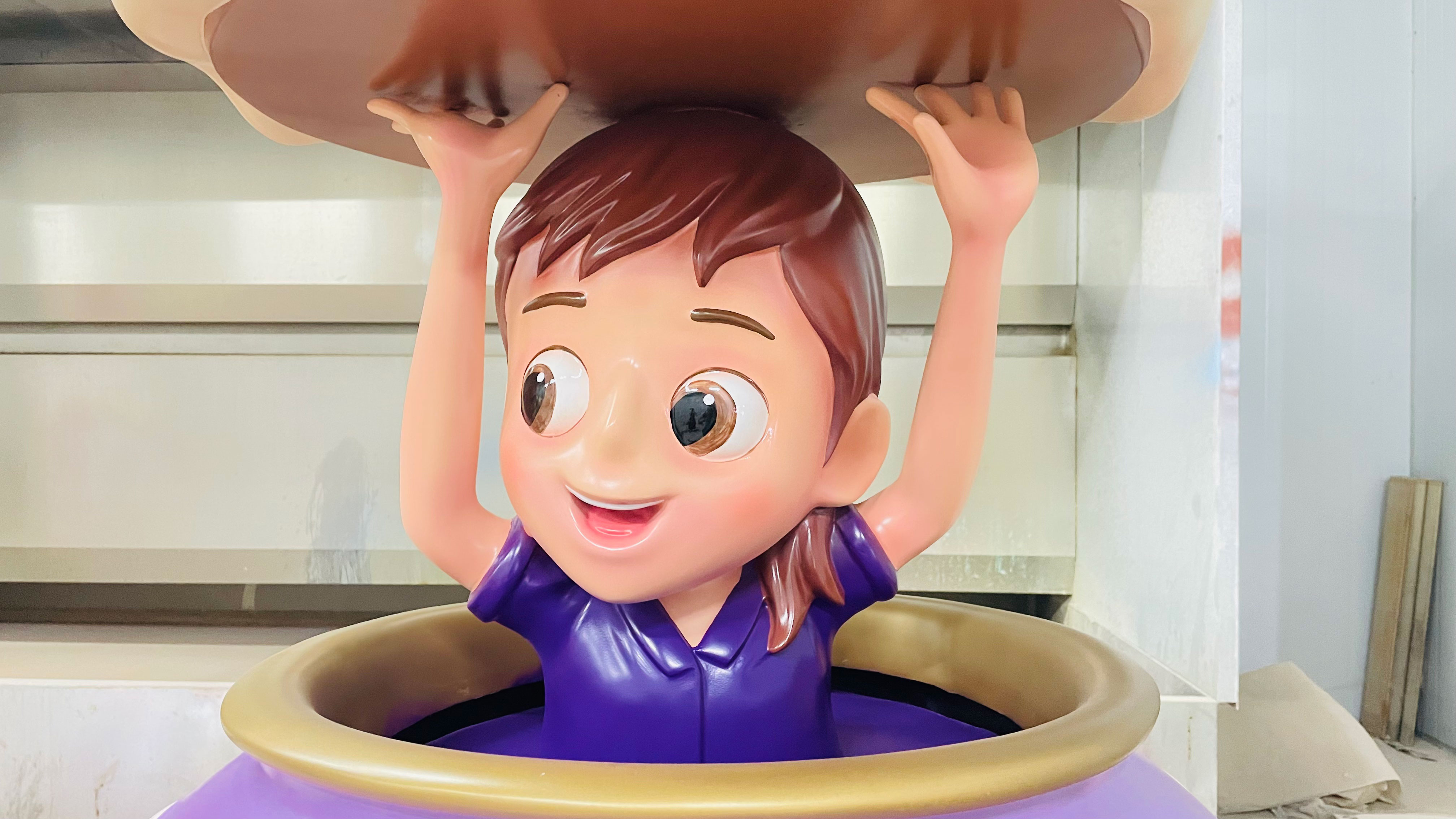
Affordable Bronze Alternatives Using FRP
While bronze has long been prized for its timeless appeal, its high material and maintenance costs make it impractical for many modern applications. FRP (fiber-reinforced plastic) sculptures now offer a compelling solution, replicating the rich textures and depth of bronze at a fraction of the price. By layering fiberglass with polymer resins, artists achieve metallic finishes indistinguishable from traditional casting—without the brittleness or weight of metal. This innovation allows homeowners and designers to incorporate bold, museum-quality pieces in spaces where bronze would be cost-prohibitive or structurally challenging, such as rooftop gardens or high-traffic public areas.
Unlike bronze, FRP resists corrosion, UV damage, and temperature fluctuations, making it ideal for outdoor installations like garden statues or architectural accents. For indoor settings, its lightweight nature enables larger-than-life wall murals or freestanding sculptures that won’t compromise floor integrity. When paired with complementary materials like stainless steel sculpture, FRP creates dynamic contrasts between matte and polished surfaces. Customizable patinas—from verdigris to oil-rubbed bronze—ensure each piece aligns with specific design narratives, proving affordability doesn’t require sacrificing artistic ambition.
Custom FRP Sculptures by Dwelling Store
Dwelling Store’s custom FRP sculptures bridge artistic vision with technical precision, offering tailored solutions for both private and commercial spaces. Unlike mass-produced decor, these bespoke creations begin with collaborative consultations, where designers translate client ideas into 3D models using advanced CAD software. The fiber-reinforced plastic (FRP) material allows for intricate detailing—from lifelike textures to geometric abstractions—while maintaining structural integrity in sizes ranging from tabletop accents to monumental installations.
A key advantage lies in FRP’s adaptability: pigments and coatings can mimic patinated bronze, weathered stone, or sleek metallic finishes without compromising the material’s weather-resistant properties. This versatility makes custom pieces suitable for coastal gardens, high-traffic lobbies, or humidity-prone indoor pools. For hospitality projects, Dwelling Store integrates functional elements like concealed lighting or seating into sculptural forms, blending aesthetics with practicality.
Clients benefit from FRP’s reduced weight compared to traditional mediums, lowering shipping costs and simplifying installation—particularly for ceiling-mounted works or rotating exhibits. With a typical production timeline of 6–10 weeks, the process balances craftsmanship with efficiency, ensuring each sculpture meets exact specifications for scale, finish, and environmental durability.
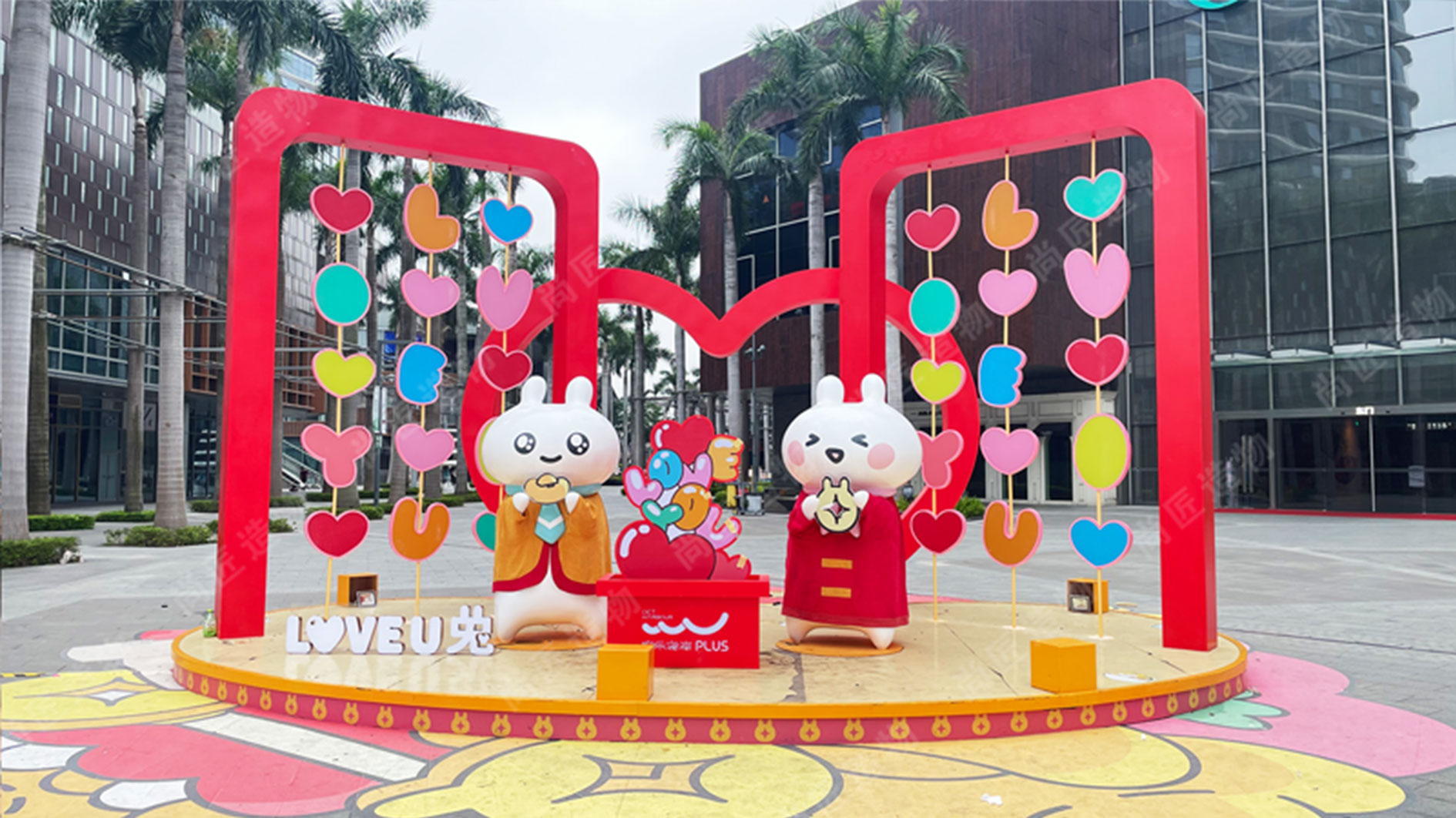
Indoor-Outdoor Art Fiber Reinforced Plastic
Fiber-reinforced plastic (FRP) offers artists and designers unparalleled flexibility for creating cohesive art installations that transition seamlessly between indoor and outdoor environments. Unlike traditional materials like bronze or stone, FRP sculptures maintain structural integrity in fluctuating temperatures and humidity levels, making them equally suitable for a sunlit garden or an air-conditioned lobby. The material’s lightweight nature simplifies installation in challenging spaces—such as vertical walls or elevated platforms—without compromising durability. Advanced molding techniques allow for intricate details, from lifelike textures to metallic finishes that mimic bronze or copper, ensuring visual continuity across different settings.
For outdoor use, FRP’s weather-resistant properties prevent corrosion, fading, or warping, even in coastal or high-rainfall regions. Indoors, its non-porous surface resists stains and simplifies cleaning, ideal for high-traffic areas like hotels or offices. Designers increasingly leverage this dual functionality to unify interior and exterior themes, such as extending a garden’s aesthetic into a building’s atrium with matching botanical sculptures. By combining practicality with artistic precision, FRP bridges the gap between functional design and expressive art, offering solutions that adapt to evolving spatial needs without sacrificing aesthetic impact.
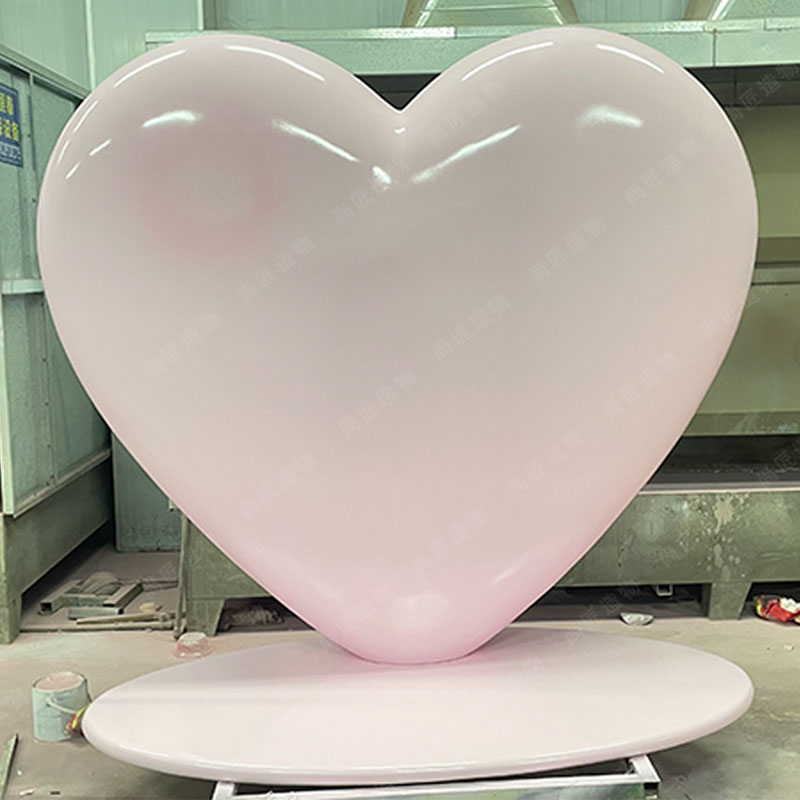
Conclusion
As we’ve explored, fiber-reinforced plastic (FRP) sculptures bridge artistic vision and functional design, offering solutions tailored to contemporary needs. Their lightweight nature and weather-resistant properties make them adaptable to diverse environments, from outdoor gardens to minimalist indoor interiors. Unlike traditional bronze, FRP provides cost-effective durability without compromising on aesthetic depth—achieving lifelike textures and metallic finishes that elevate modern spaces.
This material’s versatility extends beyond standalone statues, integrating seamlessly into architectural elements like wall murals or functional furniture. By combining longevity with creative flexibility, FRP empowers designers and homeowners to reimagine spaces sustainably. Ultimately, these sculptures exemplify how innovation in materials can redefine art’s role in daily life, balancing practicality with timeless elegance. Whether enhancing public landscapes or private interiors, FRP stands as a testament to art’s evolving relationship with modern technology and environmental demands.

Frequently Asked Questions
What makes FRP sculptures suitable for outdoor installations?
FRP (Fiber Reinforced Plastic) combines resin and fiberglass, creating a material that resists cracking, UV damage, and moisture. Unlike traditional bronze, it won’t corrode in rain or extreme temperatures.
How do FRP sculptures achieve a bronze-like appearance?
Artisans layer metallic finishes and patinas onto the FRP surface, mimicking bronze textures. Advanced coating techniques ensure the effect remains intact even in harsh weather conditions.
Are these sculptures lightweight enough for wall murals?
Yes—FRP weighs up to 70% less than solid metal. This makes it ideal for large wall murals or ceiling installations without requiring heavy structural support.
Can FRP furniture withstand daily use?
FRP’s flexibility and impact resistance make it durable for furniture. Its finish resists scratches, and the material won’t warp under weight or humidity changes.
Is customization limited with FRP sculptures?
Dwelling Store offers full customization, from abstract shapes to hyper-realistic figures. The material’s moldability allows intricate details, while finishes can match any design theme.
Why choose FRP over real bronze for public art?
FRP provides similar aesthetics at 30-50% lower cost. Maintenance is minimal, and repairs are simpler compared to welding or recasting metal.
Do indoor FRP sculptures require special care?
Dust regularly with a soft cloth. Avoid abrasive cleaners—a mild soap solution preserves finishes. No sealing or polishing is needed.
How long do FRP artworks typically last outdoors?
With proper installation, they retain their quality for 15-20 years. Protective coatings can extend this lifespan, even in coastal or high-humidity areas.
 ch
ch English
English

